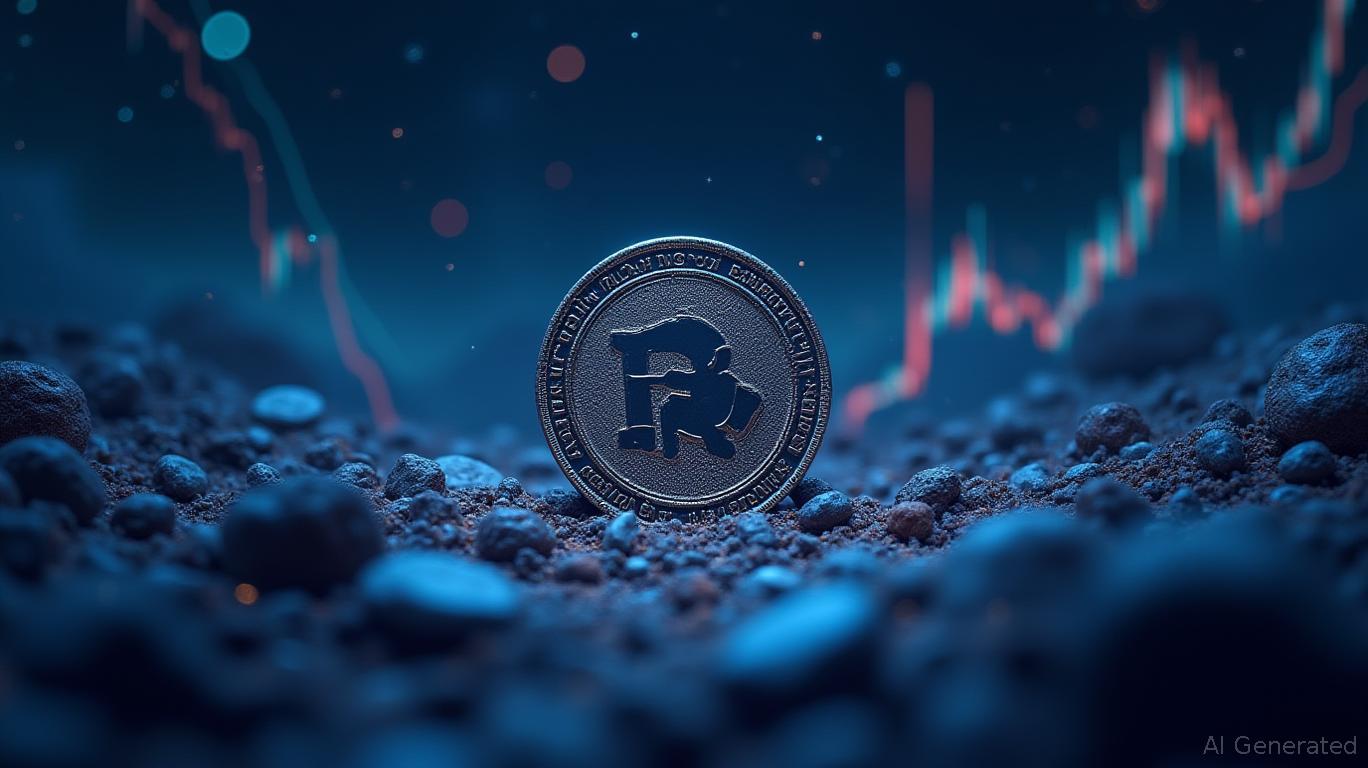ISR Technology Fuels America's Uranium Comeback to Strengthen Energy Security
- enCore Energy discovers shallow uranium deposits in Texas using ISR, cutting drilling costs by 40% and leveraging existing infrastructure for rapid production scaling. - Urano Energy acquires enCore assets to expand its uranium portfolio, aligning with U.S. energy security goals amid reduced reliance on Russian and Central Asian imports. - Federal policies and DOE initiatives prioritize domestic uranium production, with enCore's dual ISR operations (Alta Mesa/Rosita) positioned to benefit from regulatory
Recent activity in the U.S. uranium industry signals increasing momentum for homegrown nuclear fuel production, as companies such as

enCore Energy’s Alta Mesa ISR operation has uncovered several uranium-rich roll fronts within its permitted area, leading to a 40% reduction in drilling expenses due to shallower targets (320–345 feet) compared to earlier exploration, as reported by Crux Investor. By systematically reviewing historical drilling records, the company found mineralized stretches over 2,500 feet long, allowing for swift production increases without the delays of developing new sites. This method takes advantage of current infrastructure, including a processing plant capable of handling 1.5 million pounds per year, to speed up output. CEO William Sheriff highlighted ISR’s efficiency, noting, “Our uranium is extracted faster than most... Our cash flow comes in sooner, but that also requires us to keep ahead in drilling and development.”
The urgency for U.S.-based uranium production has grown as domestic utilities aim to lessen dependence on imports from Russia, Kazakhstan, and Uzbekistan. Federal actions, such as Department of Energy stockpiling and procurement programs that prioritize American-sourced uranium, are transforming the sector. enCore stands out as the only U.S. firm running multiple ISR facilities—Alta Mesa and Rosita—positioning it to benefit from these changes. With $46 million in cash and $21 million in securities as of fiscal 2024, enCore is financially prepared to support further growth while retaining flexibility.
ISR, which involves using oxygenated water to dissolve uranium underground, provides both economic and environmental benefits over traditional mining. It limits surface impact to under 5% of the project area and reduces carbon emissions, aligning with ESG goals important to utilities and investors. enCore aims to produce 3 million pounds of U₃O₈ per year by 2026 and 5 million pounds by 2028, leveraging ongoing resource expansion and Texas’s efficient regulatory environment.
Urano Energy is moving forward with its I-70 Uranium Project through a targeted acquisition of enCore Energy’s assets. Although Urano has yet to confirm historical reserve figures, its current focus is on permitting and exploration to support U.S. policy objectives. This acquisition is part of a wider trend of industry consolidation as companies seek permitted, scalable assets in a tightening uranium market.
Procurement strategies at both federal and utility levels now favor companies ready for immediate production, as projects still in development face lengthy timelines. enCore’s operational capacity and its location within Texas’s established ISR regulatory system provide a significant advantage. Its partnership with Boss Energy Limited further reduces risk, with enCore overseeing operations under a 70/30 profit-sharing structure.
With uranium prices holding strong amid global growth in nuclear power and restrictions on Russian supply, companies with low-cost, permitted production are seeing increased valuations. The advancements by enCore and the strategic moves by Urano demonstrate the industry’s alignment with U.S. energy security priorities, positioning them to benefit from ongoing supportive policies and market trends.
Disclaimer: The content of this article solely reflects the author's opinion and does not represent the platform in any capacity. This article is not intended to serve as a reference for making investment decisions.
You may also like
Caribbean Prepares for Hurricane as Geopolitical Strains and Reductions in Food Assistance Loom
- Hurricane Melissa, a Category 4 storm, threatens Jamaica with catastrophic flooding and landslides as it intensifies before landfall. - U.S.-Trinidad military drills face Venezuela's "false-flag" accusations, highlighting regional tensions amid natural disaster preparations. - Trump administration's Nov. 1 food aid cuts draw bipartisan criticism, forcing states to redirect SNAP recipients amid hurricane supply chain risks. - U.S.-China trade talks aim to avoid tariffs over rare earths, while Canada faces

Bitchat's Bluetooth system remains robust while hurricanes severely damage Jamaica's infrastructure
- Bitchat, a Bluetooth-based decentralized messaging app, became Jamaica's second-most downloaded app as Hurricane Melissa crippled infrastructure with 185-mph winds. - The storm killed 30+ people across the Caribbean, including 23 in Haiti, while the app enabled encrypted communication during power outages and flooding. - Bitchat's surge mirrored crisis adoption in Nepal, Indonesia, and Madagascar, highlighting its utility in disaster zones with decentralized, censorship-resistant networks. - The Trump ad

MoonBull's Scarcity Approach Surpasses TON, LINK's Lackluster Progress
- MoonBull's presale raised $450k from 1,500+ investors, projecting 9,256% returns if tokens hit $0.00616. - Outpaces stagnant TON and LINK amid market volatility, leveraging 23-stage pricing and 95% APY staking. - Mobunomics allocates 73.2B tokens with 50% presale scarcity and 11% referral incentives to boost adoption. - Meme-driven narrative combines viral marketing with utility, attracting both retail and institutional investors. - Stage 5 marks final entry before listing, with escalating prices and lim

HBAR ETF Gets Green Light, But Convincing Altcoin Doubters Remains Challenging
- Hedera's HBAR token dropped 6% post-ETF approval, contrasting with Solana's $56M debut volume. - The $8M HBAR ETF launch highlights altcoin market skepticism despite regulatory progress and institutional backing. - Technical indicators like death cross and declining on-chain metrics signal bearish momentum for HBAR. - Analysts note ETFs provide regulated institutional access, though broader crypto volatility and SEC delays dampen immediate adoption. - Hedera's enterprise partnerships and USDC growth on i
